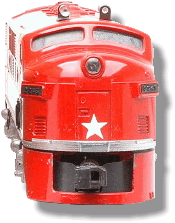Just curious as to why MPC removed most portholes and other details from the F3's beyond that needed to aid in printing the sides? The details are already in the tools...so the cost savings had to be minimal at most. If costing more to remove the items. I think I read they had slips that fit into the tooling to alter the details.
Replies sorted oldest to newest
I thought MPC had the same detail variations as Lionel. For example some MPC F3s had the level of detail of the later Lionel Corp F3s like the 2383 - no porthololes, add-on ladders, roof screens or grab irons -- whereas other MPC F3s had some of those features similar to Lionel Corp's 2343 or 2353 (although I am not sure if an MPC F3 ever roof screens instead of louvers).
MPC F3 shells do not have louvers on their nose (more or less under the number boards). There are probably other differences as well.
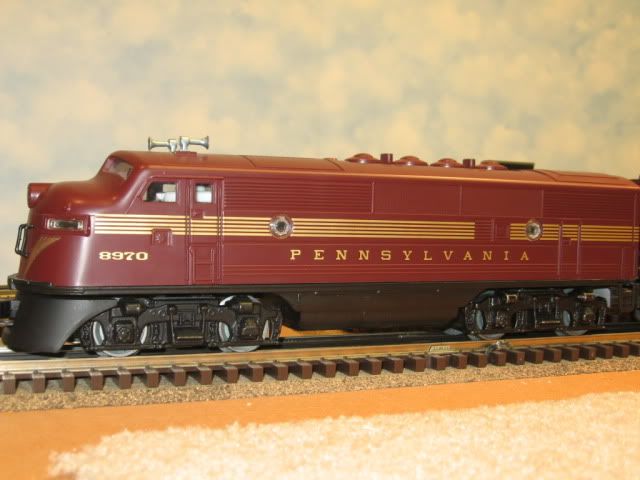
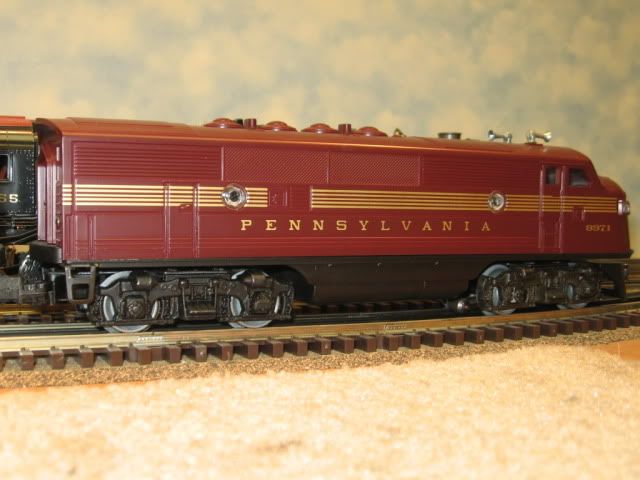
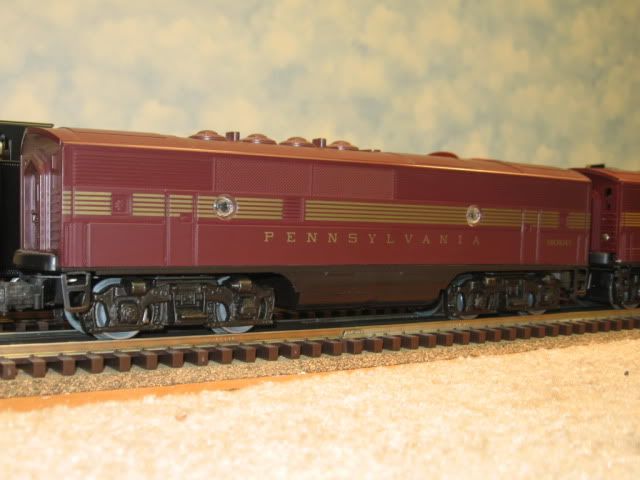

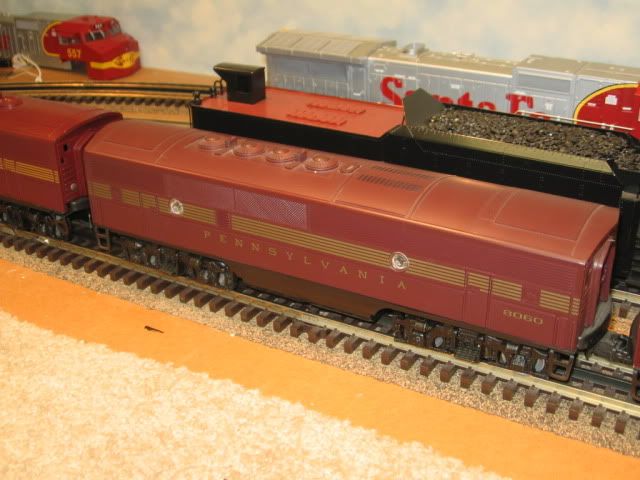
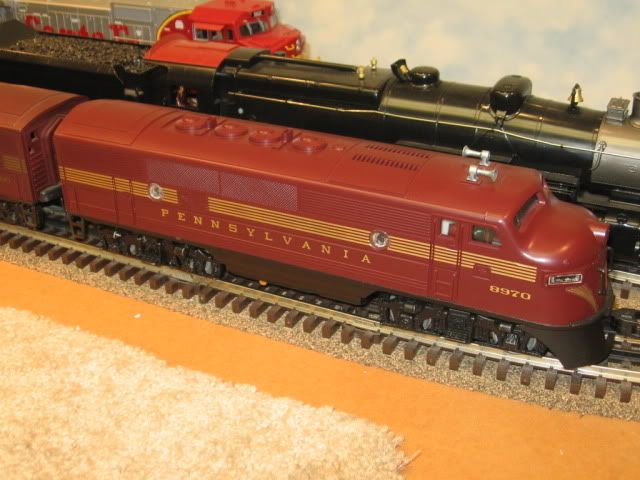

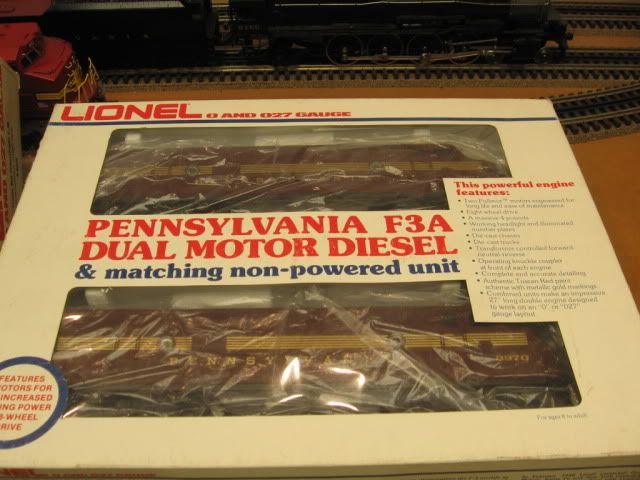
Early MPC used a lot of PW dies so their early F3s were made from them. As the pics above show over time MPC added more features and working horns.
It appears that the early MPC F3's used the same dies that Lionel used back in 1955...
Marty
My MPC CP A-A set that I bought new back in the Seventies had filled-in portholes. I know because the first thing I did after buying them was to open up the holes and put PW porthole lenses in them.
Still have them, by the way.
I had the MPC first release of the Santa Fe F3 #8652 and it had closed portholes but it was a great runner and at the time, owning a brand new Santa Fe F3 ABA set was to me a miracle.
Like David mentioned above, MPC got me back into Lionel trains again and carried the hobby through to where it is today. Not enough good can be said about this period in Lionel train history.
Steve, Lady and Tex
In 1979 Lionel MPC released upgraded versions of the F-3AAs in Pennsylvania livery with the Brunswick green 8952, powered, and 8953 dummy. The port holes, front grab irons and dual motors from the early 1950s PW days returned.
The upper part of the bodies still had louvers rather than screens and there was no Magne-Traction, but the new units were so much nicer than the older MPC units that I bought both the green and later tuscan versions. Lionel never did PRR F-3s in the PW era, which is one of the reasons I still own them.
Ed Boyle
I had the MPC first release of the Santa Fe F3 #8652 and it had closed portholes but it was a great runner and at the time, owning a brand new Santa Fe F3 ABA set was to me a miracle.
Like David mentioned above, MPC got me back into Lionel trains again and carried the hobby through to where it is today. Not enough good can be said about this period in Lionel train history.
Steve, Lady and Tex
Roger, that!!
My favorite MPC F3 was the Amtrak bloodynose pointless arrow. I'm looking for an MPC RioGrande dummy F3 to make into an ex Rio Grande Penn Central yellow repaint.
I am pretty sure the current PW F3 tooling is still original Lionel tooling from the PW era. They just refine and clean stuff up over time. Though I could be wrong...but at least they are new tools cast off the original master....but Im sure Lionel cast new working tools all the time in the 50's as well of a master.
The Lionel Corporation removed the port-holes in the PW era. They also removed the nose-grabs, two piece cab ladders, and the screened vents. These were all gone by the time General Mills got a hold of the dies.
Once General Mills began production, the first F-3's were essentially copies of the late Lionel Corp F-3's, lacking port holes, screened vents, nose grabs, two-piece cab ladders, plus the elimination of the nose vents.
Over time MPC removed the side vents as needed to allow for fancier decoration, along with the addition of the much-loathed ridges along the bottom edge of the die which helped in the printing og the stripes on the Santa Fe F-3.
By the late 70's the trend began a slow reversal, first bringing back the ports and nose grabs, then the two-piece ladders, then the screened vents, then the nose vents, then the side vents, and finally the elimination of the bottom ridges.
Jon ![]()
Slightly off-topic, but what was modern Lionel's first true Scale F3 model?
MPC changed the body style on each F3 it made up until the late 70s
The 1st one, made in 73 is pretty much like a late postwar 2383 only w/ no vents on the lower part of the nose.
The Milw & D&RGW units are missing a set of vents on the side - only 3 while the B&O & postwar units had 4,
The changes went on unit there was just 1 vent, towards the rear of the body & ribs were put in on the lower part of the body ( similar as the Alcos). The B units did not have the ribs, but at some point lost the 2 vents on the side of the body & went to one. Lionel restored pretty much all of the original detail w/ the PWC F3 series although the Texas Special reissue B Unit only has one side vent. The only thing that has not been part back, IIRC, is the door detail on the nose, which was taken off when postwar Lionel made the 2242 New Haven F3s in 58
Slightly off-topic, but what was modern Lionel's first true Scale F3 model?
Sam, I believe the first Lionel Scale F3 was released a few years ago. But that's enough on scale, this is a great MPC thread.
Steve, Lady and Tex
As a recap (of sorts), MPC's F-3's were similar to the late PW F-3's in that most of the original detailing found on the early PW F-3's was gone by the mid 1950's.
MPC production went the opposite of the PW era in that as time went on MPC restored more of the detailing, as opposed to the PW era, as fine detailing was gone as time went on.
The first MPC F-3's have the distinction of being manufactured at the Hillside factory, the first F-3 made in Mt. Clemmens was the Rio Grande.
Ken
As a recap (of sorts), MPC's F-3's were similar to the late PW F-3's in that most of the original detailing found on the early PW F-3's was gone by the mid 1950's.
MPC production went the opposite of the PW era in that as time went on MPC restored more of the detailing, as opposed to the PW era, as fine detailing was gone as time went on.
Correct; it could be seen as a pendulum effect where the trend completed its swing roughly mid-way in the MPC era and was swinging back towards the end.
Were the first MPC F3's made using the existing parts bin from Hillside? had any production occurred at Hillside since 1967ish?




